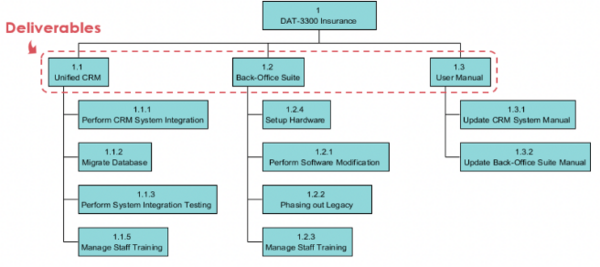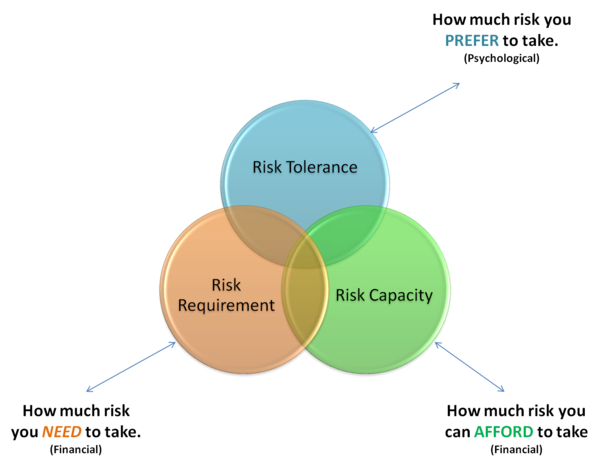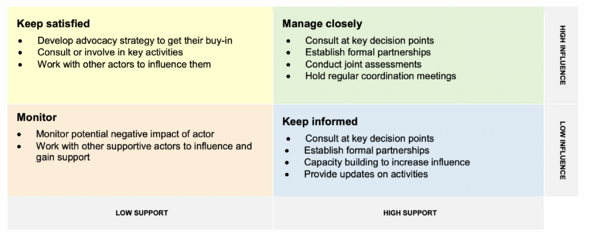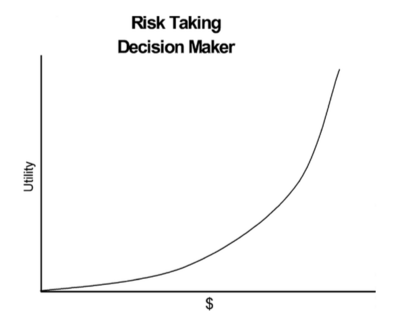Risk Profile in Turnkey Projects
As a result of innovations in the partnering relationships between the client and the project coalition actors, there has been a transition in the construction industry. There is a number of different ways to form construction projects, and the different structures come with unique risks for actors involved in the project. The currently trend is use of the integrated project coalition, also called turnkey, characterised by a single contract for both execution and design of a project. Benefiting from this is the client, with low risk and project uncertainty. [1]On the other hand, this provides more uncertainties for actors as contractors, designers and consultants. Managing Uncertainty and Risk on the Project is especially important in turnkey.
This type of project management approach requires a thorough risk profile for the project coalition actors to avoid damaging missteps. It will always be numerous risks in construction contracts, and without a risk profile it could leave the contractor, designer or the consultant dangerously exposed to unexpected responsibilities and risks. However, without risks there will not be innovation. Risks and opportunities are related and you need a balance between the two. This wiki-article will look at the leading contractual risk factors and risk profile for the actors in turnkey contracting in the construction industry.
Contents |
Turnkey Projects
Definition
Turnkey is also named integrated coalitions or single–point responsibility. This type of project is constructed as a complete product for a client. This means that within the clients order there is both design and execution. [2] In turnkey the goal of the contractor is to satisfy the clients performance specifications. Where in general contracting the contractor address designer's plans and specifications. Turnkey contracting is getting more used in the building industry because the client transfer maximum risk to the supplier.
Structure
You can see the relationships between the actors in a turnkey at the figure below:

Fig. 1: Turnkey contract structur [3].
As you can see in the figure above, the main responsibility is centralized with the turnkey contractor. Normally they guarantee compensation for delays and take full responsibility for overall project cost. [4] In a general contract it is a three-party arrangement between the client, designer and the contractor. Here, the client must relate to two parties and get responsible for impact caused by design defects [5] .
Often, the client hires an independent consultant to advise in the pre-contract phase, and sometimes throughout the project. This way they make shore the constructor holds the requirements of the project. The third-party can be a project manager, engineer or another kind of consultant. As there often occur conflict of interest when a single contractor is responsible for the overall project on behalf of the client, a consultant could be wise. The constructor wants to complete the work as fast and cheap as possible. Consequently their financial goals often collide with the quality of the finished project.
The turnkey structure is most applicable when there is a large amount of information early in the process, the building is repeated or it is a simple type.
Benefits
One of the main benefits with this type of contracts is the savings in production cost. Because the contractor has responsibility for both design and construction, the building process can start before the design specifications are completed. This way, the contractor saves time and money. It is also more efficient when they are responsible for law related and local neighbour problems. There is a lot of money to be spared when these situations are handled gently and effectively.
Turnkey contracts are most off all benefiting the owner of the project. First of all, this type of contracting provides the owner with just one source of responsibility. In contrast, the contractor alone has the responsibility of defects caused by both design and construction. Meaning that the owner does not have to determine if a defect is caused by a misstep in design or construction - nevertheless, it is not their responsibility to fix it. The contractor must pay for any additional cost because of defective design or construction. Nothwithstanding, if the owner authorized the construction plan in the start, then they are responsible of extra costs caused by insufficient plans.
Additionally, turnkey contracts will be attractive for owners without proper technical knowledge. Owners do not need to have the detailed qualifications, that will be one of the constructor’s prerequisites.
Limitations
The construction business is a competitive industry and compared to other sectors there is high risks and low profit. In turnkey contracts tendering is the normal way to get the job. Then there is a fixed price and a packaged deal for the client. The lowest price is often the winner. A consequent of this is how the constructor price and handle the risks involved in the project. Often, the constructions are simple to get the cost-effectiveness at a level so they achieve an attractive price for the project. Another result can be deficient design, and without detailed checking from a third-part, this can be expensive.
Where there is not a fixed price, the owner has to negotiate the price after hiring a contractor based on design. This way the contractor make sure they do not waste money on a proposal design. On the other hand the owner may not get the lowest possible price for the project.
Further, there are no adequate standard contracts for turnkey. There is a lot of uncertainties for the turnkey contractor and the sub-contactors, and it is a need for a safety net in the contract so that they have controll over variations under the project. A way to solve this could be payment at fixed milestones. Where there is a lump sum price for the project, the uncertainties are even bigger. This is mostly because it is hard to know the precise timeline and costs of a building project. Therefor the contract must be specified carefully.
With turnkey the owner of the project will have a limitation to the amount of influence on design details. Examples of limitation can be knowledge of delays, defective work and extension of the time schedule. Overall they will have less control over the process. Since the owner is not part of the construction part and have little verification options, they are exposed in a turnkey. This could result in improper payment and non-conforming work. In the traditional turnkey there is no party that protect the owner’s interests, so they have to be extra aware of liquidity and responsibilities in different situations.
Risk Profile as a tool
Problems facing risks are often hard to clarify because it is not visible or definite. In every industry there is a form for risk, and there is various definitions of the term. In common they all sum up that risk is an unwanted uncertainty. How it is handled depends on the projects internal and external environment. By making a risk profile the parties involved can manage the risks effectively.
Definition
Before looking into risk profiling, it is important to define risk as a term. Risk will be determined differently depending on what industry your project is related to. Marc and Shapira (1987)[6] described risk in technology-driven organizations as “distribution of possible outcomes, their likelihood, and their subjective values”. Meaning that risk will be individual for each firm in a specified project. Stakeholders will have another view at the risks and the outcome of a project compared to the client, the constructor or the consultant.
Risk profiling is an evaluation process of an organizations accept of risk, the level of risk to which they are exposed and the required risk finishing the job. It is an analytical tool used to plan Risk Management. This type of analytical techniques is used to define the total risk management situation of the project[7]. For example, the profile will tell the clients, stakeholder or the consultants risk acceptance and enthusiasm according to the project. The profile will be specific for an individual company associated with a specific project.
It is important to have the risk profile tool separated from the risk assessment tool[8]. The two develop dissimilar and provide different information for the project manager. The purpose of the risk assessment is to give a detailed picture of risks within single processes in a company, risk profiling is risk identification on a higher level.
Structure
As said, there are three aspects in risk profiling that must be evaluated and compared. Figure nr.2 shows the relationship between them:

Fig. 2: The relationship between the three aspects in risk profiling[9].
Risk Tolerance
This is the level of risk that the organization is willing to take. It will affect the corporation’s decision making and the project itself. The firm´s acceptable risk must be coupled with the correct definition of risk.
Because of its human dynamic, you can say that risk tolerance is a subjective concept. To quantify risk tolerance you have to figure out the probabilities for occurrences and the impact of it. Too measure the impact and this psychological characteristic, you have to look at the circumstances, values, preferences, attitudes and investment and financial risk of the project for a specific firm.
When a firm knows the risks together with the likelihood of occurring, they can focus their resources towards the risks that lie above their acceptable risk level. This can be visualised as in the figure of probability and impact below:

Fig. 3: Visualization of probability and impact [10].
At the figure you can see that the company's risk level drops when the impact increases. And for this example there is one risk factor over the acceptable level, and this must be addressed by the relevant company.
Another tool for understanding and visualizing risk tolerance is through a utility curve:

Fig. 4: Visualizing through utility curve [11].
Figure 4 shows the relationship between cost and utility for a risk taking company. The more benefit they get, the more it costs.
Awareness of risk tolerance will give the project managers a better overlook on how they should use their recourses. By locating the most crucial risks they can be handled and eased to an acceptable level. The result will be better decision-making, shorter length of the project and avoidance of unexpected costs.
It also important to communicate the acceptable level of risk throughout the firm so everyone knows how innovation it is acceptable to be. Because it is important to remember that there is a close connection between risk tolerating and innovation.
Further, it is important to remember that risk tolerance is dynamic and that the acceptance of risk will change with time and through the project. Additionally, when you have bigger firms with portfolio management structure, it is important to recall that lowering the overall risks will not automatically work for a single project. It is a challenge to find a common risk tolerance for all participants for the whole life cycle of the project. The level of risk tolerance should be set already in the start when the purpose of the project is being clarified.
Risk Capacity
This is the measure of financial risk the firm can afford to take. The factor is based on the firm’s investment strategy and how the measured risks for the task required will negatively affect the company’s financial goal.
Risk Requirement
This is the actual risk the project requires to be done within the budget, schedule and the requirements of the client. Unlike the risk tolerance level, this is risk the firm has to take to reach the goals for the project. When a client espect more in return then the risk they are willing to take supply, you have to adjust the balance between the tow and the risk required will follow.
Benefits
The success of a job comes easier with an in-depth understanding of the companies needs in accordance to their expectation of the outcome of the project. This way companies choose more wisely and avoid dangerous risks. In projects it is impossible to avoid risks, but when you understand them you can benefit from them.
Limitations
There is no accurate way to measure a firms risk capacity and risk tolerance because it is unique for each company and exclusive for every single project[12].
Very often after a risk profiling, the client see that the risk tolerance and the two financial aspects, required and capacity of risk, are not the same. The result is often not reaching the goal of the task. In these cases adjustments must be done to make a balance between the risks taken and the goal of the task.
In the classic risk profiling you only look at the current situation of the firm in a particular project. With this method the history of the company will not be considered. By looking at a firm’s decision-making over time, their experience in the industry and their overall attitude to risk, it will give a better risk profile.
Risk Profile in Turnkey Projects
Risk and uncertainty are damaging factors in the construction industry. The industry is characterized by complexity, time pressure and a competitive marked. It can be very costly for stakeholders not to account for risk. The chance of failure in turnkey shows that project coalition actors, especially contractors, need to have a framework for risk analysis. As the risks are subjective, risk profile in turnkey vil be different from Risk Profile in General Contracting.
Ling (2005)[13] identified contractual global risk factors:
- The nature of the work.
- Combination of the workload and the constructor’s need of the project.
- The level of realistic pricing of the project.
- The amount of competition of the project.
These factors can be modified and used in analysis of turnkey contracts:
- Pricing of the project; owner’s unreasonable expectations.
- The amount and use of subcontractors; inexperience, lac of skilled labour.
- The contractor; poor project management, incompetent team.
- The external risks.
- The internal risks of the different coalition actors.
- The unforeseen site conditions.
When you make a companies risk profile you need to look at the factors above. To be able to establish the level of risk tolerance and risk capacity you have to identify all risk required completing the firm’s task within the project. As explained, the risk tolerance is a psychological characteristic. Knowing the level and amount of risks will shape a company’s risk profile connected to a specific project.
As explained under the section about turnkey contracts, the use of tendering forces contractors to deliver as low price as possible for projects. A way to cut down on prices is to shorten the length of the project. It is not easy to know the amount of work or the exact timeline of a construction project. With this Management of risk, the project manager can make a more likely picture of worst-case scenario of the project. This way the cost will match the amount of work to finish.
As a result of long experience and innovation, new technical solutions and building methods are being developed. Risk caused by this development are most often the clients responsibility. Meaning that the contractors responsible are based on result and effort[14].
Baloi & Price (2003)[15]. found that there is a close relationship between the use of virtuous risk management tools and successful projects. This is logic; risk is defined after its impact on the objects set for the project. It is important that, for example, the consultants knows the risk they are taking on and their capacity so that they can price their risk and protect their interests in the contract. Still, many contactors rely on their own experiences and similar jobs to price the project. When doing this, it is important not to avoid innovation in the process.
The process from Risk Identification till pricing is crucial in a turnkey contract. It is important that the firm has a realistic expectation for the outcome of a project, combined with their risk tolerance. The contractor, consultant, owner or sub-contractor need to process the risks identified and construct preventing measures.
There is many companies that offers risk profile generators, such as OGC(www.ogc.gov.uk) or RiskBusiness. This way companies can look at their risk profile over time and see how it changes over a project. Another benefit is the opportunity to compare with similar companies in the industry or standardised risk profiles.
A real life example
| Analytique technique | Approach |
|---|---|
| Risk Tolerance | Examines project performance over time to determine whether performance is improving or deteriorating. Graphical analysis techniques are valuable for understanding performance to date and for comparison to future performance goals in the form of completion dates. [16] |
| Risk Capacity | Comparing the progress along the critical path can help determine schedule status. The variance on the critical path will have a direct impact on the project end date. Evaluating the progress of activities on near critical paths can identify schedule risk. [16] |
| Risk Required | Comparing the amount of buffer remaining to the amount of buffer needed to protect the delivery date can help determine schedule status. The difference between the buffer needed and the buffer remaining can determine whether corrective action is appropriate. [16] |
Limitation
Risk tolerance, as explained, is a crucial part of risk profiling.[17] In big and complex project like turnkey, bad channels of communication results in miscommunication of risk acceptance level. Without Effective Communication in Project Management, a normal outcome would be delays, overspending and displeased stakeholders. There are very few communication tools for project managers, and without a communication strategy the risk profiling has little value. Therefor the risk profile is depended on Communication in Project Management. Without this, the collation actors waste a lot of time and money on risk profiles that are not getting through to the right persons.
Further, a valid risk profile depends on the risk-taking and innovating culture of the workers in the company. It has no effect if the head of the firm has a high acceptance of risk if the workers are not included and work with the same innovating goal.
Conclution
The main characteristic of turnkey is the financial aspect where the contractor is the center of risk responsible. Further, if the contract does not state otherwise, the contractor handles all risk included in the start-phase of the project, design and construction.
As discussed in the article, the risk in turnkey basically frames the contractor and the sub-contractors. Therefore, the barrier for use of turnkey should be high. With for example program management of several turnkey project, a constructor face high probability of deficit. Often to secure themselves for unexpected risks, contractors overpay consultants. There need to be a balance between the risks identified and measures to handle it. On the other hand, a successful turnkey project will be timesaving and consequently profitable.
Risk profiling basicly paint a picture of the risk situation within a company related to a specific project. After defining turnkey and the risks contractors face, it is clear that consultants, sub-contractors and contractors will benefit from risk profiling. When all parties communicate their risk profile it will be a better overall understanding of the projects realistic time perspective and costs. This is benefitting pre-work for all parties involved in the project. The coalition actors now has a tool to pick suitable projects.
References
- ↑ [Managing Construction Projects] Winch, G.M. (2010) Chapter 5.4.5, Second edition, Wiley-Blackwell
- ↑ [Managing Construction Projects] Winch, G.M. (2010), Chapter 5.4.2, Second edition, Wiley-Blackwell
- ↑ [Photography] From: Managing Construction Projects,Winch, G.M. (2010), Second edition, Wiley-Blackwell
- ↑ [Reliability through Experience] "Full Turnkey Construction(Internet)", Available from: http://www.dsengineers.com/en/contracting-services/full-turnkey-epc-construction.html, Read: 10.09.15
- ↑ [Shapiro, B.S] "Design/build and turnkey contracts - advantages and disadvantages(Internet)",Shapiro Hankinson & Knutson, Available from: http://www.shk.ca/wp/wp-content/uploads/2013/02/Design-Build-and-Turnkey-Contracts-Advantages-and-Disadvantages.pdf, Read: 10.09.15
- ↑ [Kwak, Y.H. & LaPlaced, K.S.(2005)] "Examining risk tolerance in project-driven organization",Project Management Program, The George Washington University', Available from: http://www.synergybusiness.com/files/PDF/White_Papers/Examining-Risk-Tolerance-in-Projectdriven-Organization.pdf
- ↑ [Project Management Body of Knowledge] 'Project Management Institute (2013) "Chapter 11.2", "Fifth edition", Project Management Institute
- ↑ [RiskBuisness] "Risk Profiling Service(Internet 2011)", Available from: http://www.riskbusiness.com/Services/RiskBusiness%20Risk%20Profiling%20Service.pdfl, Read: 12.09.15
- ↑ [Internet photography] Available from: https://www.google.no/search?q=turnkey&biw=1264&bih=751&source=lnms&tbm=isch&sa=X&ved=0CAYQ_AUoAWoVChMIzvzTy7qQyAIVQ4wsCh0WcgCE#tbm=isch&q=risk+profile&imgrc=oIwLWc3-fhIZOM%3A , Found: 24.09.15
- ↑ [Photography] From: Managing Construction Projects,Winch, G.M. (2010), Second edition, Wiley-Blackwell
- ↑ [Photography] From: Managing Construction Projects,Winch, G.M. (2010), Second edition, Wiley-Blackwell
- ↑ [Stammers, R] "Beyond the Questionnaire: New Tools for Risk Profiling(Internet 2015)",CFA institute, Available from: https://annual.cfainstitute.org/2015/04/27/beyond-the-questionnaire-new-tools-for-risk-profiling/, Read: 10.09.15
- ↑ [Taylor, S. & Mbachu, J.(2014)] "Profiling and mitigation risks in construction contracts",School of Engineering and Advanced Technology, Massey University, Auckland, Available from: http://construction.massey.ac.nz/NZBERS-2014_proc_fp_Taylor-S.pdf
- ↑ [Byggejuss] "Kort om utviklingsrisikoen i entrepriseretten", Available from: http://byggejuss.no/kort-om-utviklingsrisikoen-i-entrepriseretten/ Read 25.09.15''
- ↑ [Taylor, S. & Mbachu, J.(2014)] "Profiling and mitigation risks in construction contracts",School of Engineering and Advanced Technology, Massey University, Auckland, Available from: http://construction.massey.ac.nz/NZBERS-2014_proc_fp_Taylor-S.pdf
- ↑ 16.0 16.1 16.2 PMI. (2013). "A Guide to the Project Management Body of Knowledge (PMBOK® Guide)", Fifth Edition
- ↑ [Kwak, Y.H. & LaPlaced, K.S.(2005)] "Examining risk tolerance in project-driven organization",Project Management Program, The George Washington University', Available from: http://www.synergybusiness.com/files/PDF/White_Papers/Examining-Risk-Tolerance-in-Projectdriven-Organization.pdf